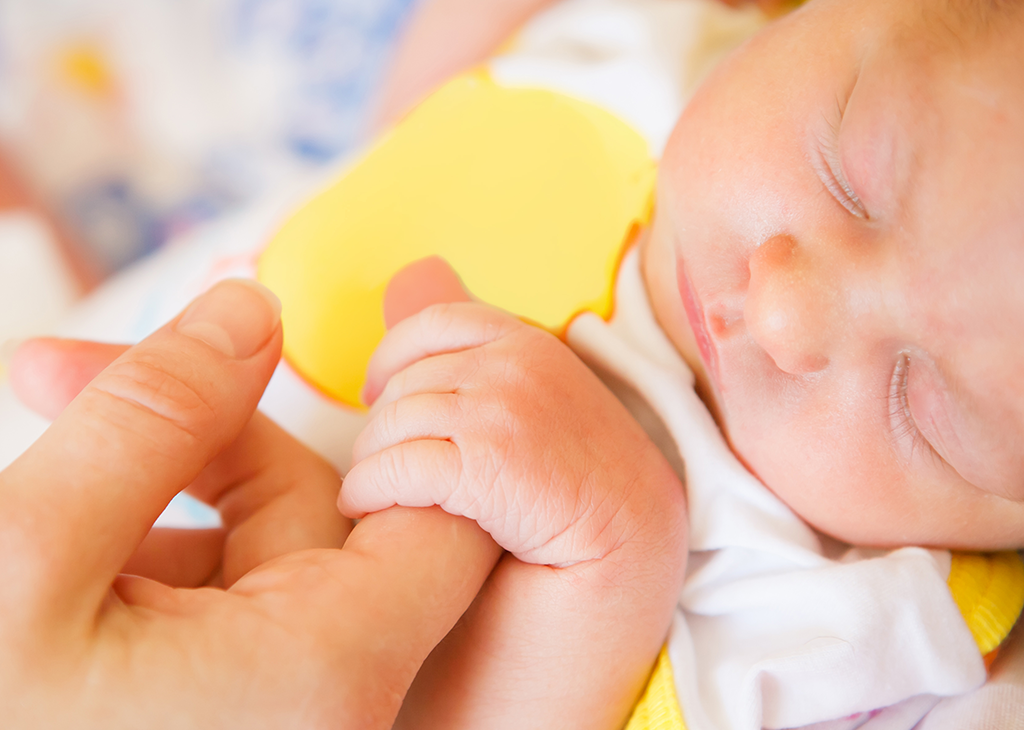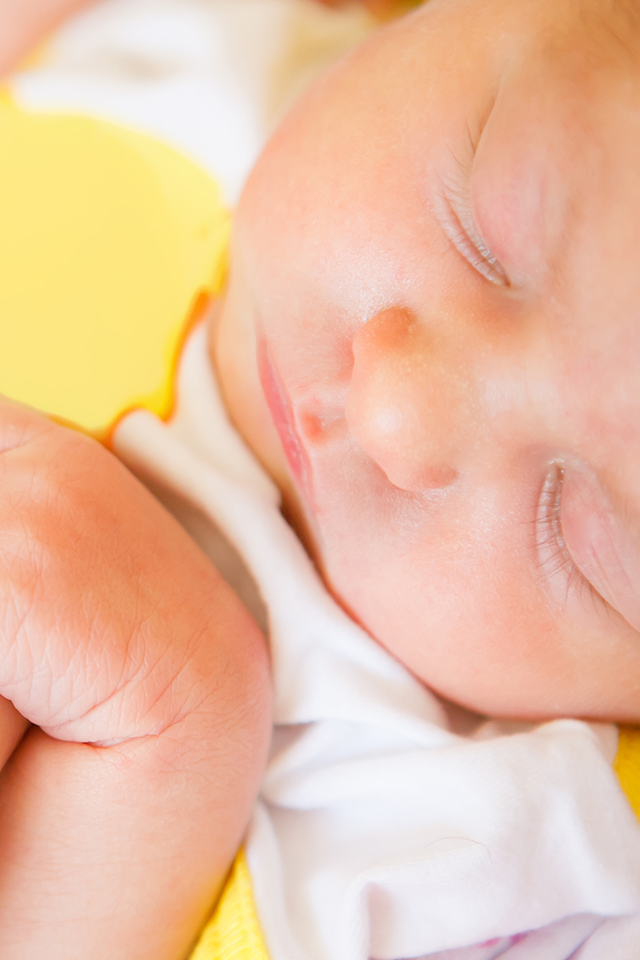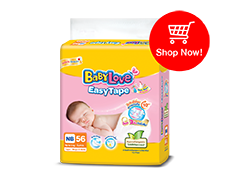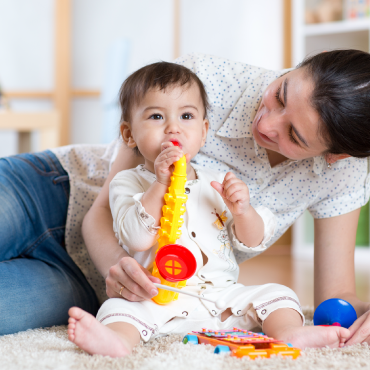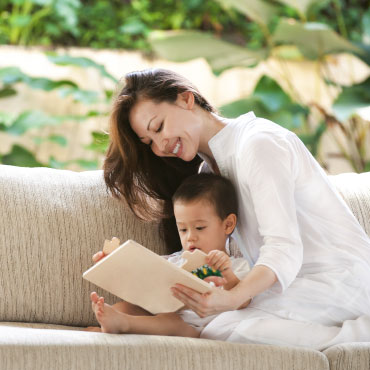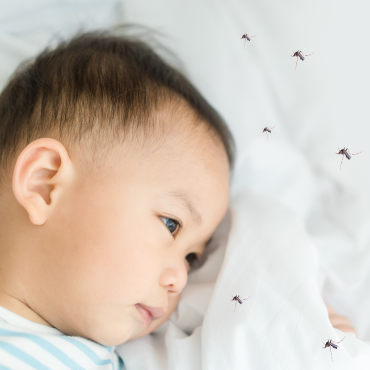The first 1-3 months after birth is a time for adjustment, both for the baby and the mother. This includes dealing with various symptoms that seem to be worrisome. However, these are symptoms commonly found in newborns. Parents should have basic information to deal with these situations properly to relieve the symptoms of the baby before consulting the doctor.
- Spitting Up
Spitting up is very common among infants and is usually not dangerous. It usually occurs because the baby’s stomach sphincter is not yet fully developed, causing the swallowed milk to travel back up from the stomach.
First Aid: After the baby is finished breastfeeding, place the baby’s head at a 30 angle for 15-30 minutes or feed the baby in small volumes, not too much that the baby’s stomach becomes too full. Spitting up should continuously decrease as the body grows and develops into completion and should disappear completely at 1 year. In abnormal cases where spitting up includes projectile vomit or when other contaminants is found, such as bile or blood, a doctor should be consulted immediately.
- Colic
This is when a baby is completely normal, takes milk well, gains weight, has no stomach pains or fever, but still cries persistently and loudly for long periods of 2-3 hours at a time. This symptoms appears at age 2-4 weeks and will continuously reduce during the 3rd and 4th months, until it disappears completely.
First Aid: Currently, doctors cannot yet determine the exact cause of Colic. The treatment is to soothe the baby in various ways to relieve the situation, such as carrying the baby with a gentle touch, gently rocking the baby, taking the baby out on a stroller for walks, etc. It is important to check whether the child has abdominal pain or flatulence. Parents or caregivers should not be too stressed with this symptom.
- Various Skin Symptoms
- Miliaria Rubra is a small liquid filled rash, usually found on the forehead, neck, back, and joints. / First Aid : This type of rash can disappear naturally. Dress babies in breathable clothing without thick fabrics and place them in well-ventilated areas.
- Infant Acne are raised small red bumps, sometimes containing puss. It usually occurs in the cheek area during 2-4 weeks after birth and usually naturally disappears at age 2-3 months. / First Aid : Regular cleaning. If the baby sweats due to the heat, use a cotton pad and clean water to clean the neck and joint areas, as well as other areas that may become damp. If the symptoms increase, consult a doctor.
- Seborrheic Dermatitis is a red rash with yellowish scales along the scalp, eyebrows, ears, and face. Symptoms usually occur in the first month, then naturally subside and disappears during the 2nd and 3rd month. / First Aid : Regular cleaning. The yellow scabs can be left of fall off by themselves or olive oil can be used to facilitate the process.
- Blocked Tear Duct
The identifying symptoms of a blocked tear duct is that the infant will always have tears in their eye. This may occur on only one or both eyes. The eye might also produce wet discharge often or all the time. A blocked tear duct is caused by a thin tissue blocking the tear duct, which is the pathway for tears to flow into the nasal cavity, causing the tears to be trapped in the area and not flow down its usual path.
First Aid : Usually, an infant’s tear ducts will open up in the first year. However, in some, this may be slower or the tear ducts may not function correctly. Use clean fingers to gently massage the inner corners of the eyes and along the sides of the nose regularly to open up the tear ducts. If there are other symptoms, such as red eyes, infection, green discharge, etc., consult a doctor.
- Umbilical Cord Infection
Cleaning the navel area of the newborn until the umbilical cord has fallen off is a routine that parents should carefully follow the doctor’s recommendations for. Wipe the navel area with 70% alcohol for wiping wounds or special antibacterial solutions for newborn umbilical cords twice a day or after baths. Always keep the navel area dry.
First Aid : The umbilical cord will fall off automatically at 2-3 weeks. If the skin around the navel area is swollen and red, has a foul smell, is damp, or oozes pus, see a doctor immediately.
- Wound from BCG Vaccination
This is a normal symptom that appears after receiving a BCG vaccination injection under the skin, which all newborns will be required to receive. Immediately after the injection, there are usually no symptoms, but after about 2-4 weeks, the symptoms begin to appear as reddened blisters, sometimes with pus. Then, it will gradually dry to a scar.
First Aid : Care and cleaning of BCG vaccination wounds with daily cleaning of the body as usual. If there are noticeably many blisters or lymph nodes growing near the injection site, consult a doctor.
Source: www.bangkokhealth.com , www.maerakluke.com
Crated At 28/12/2016







